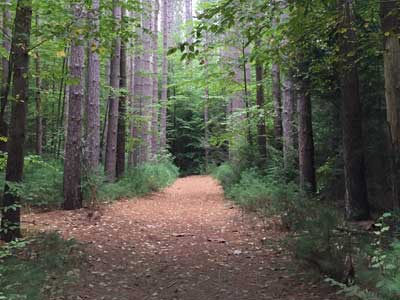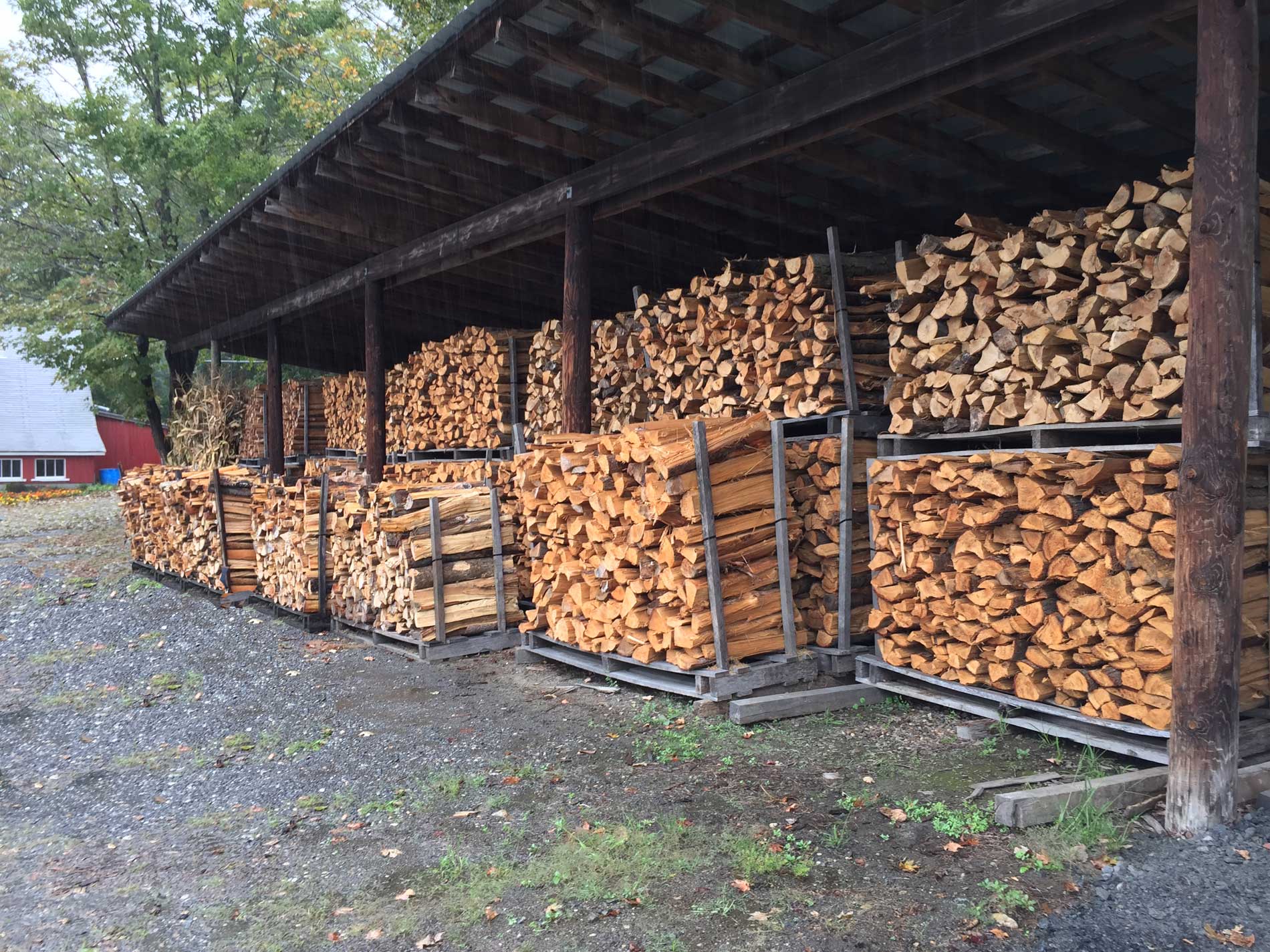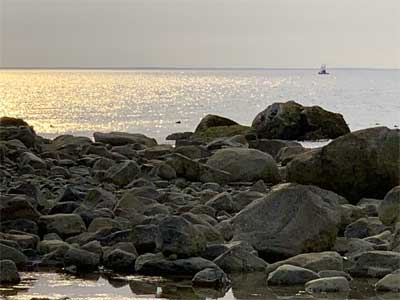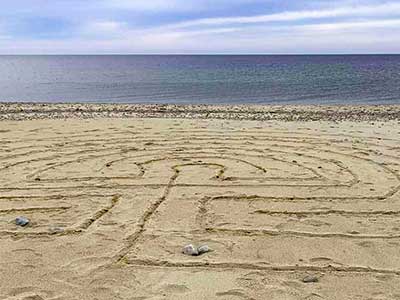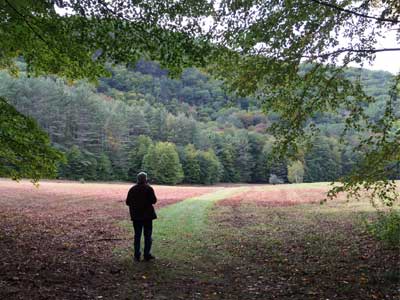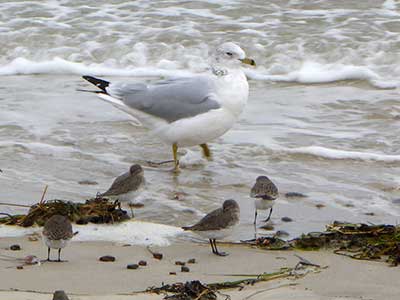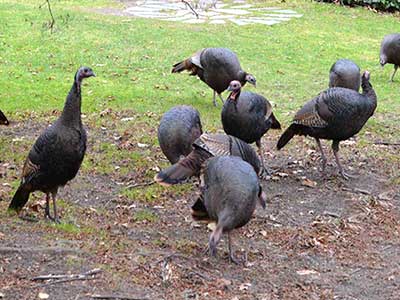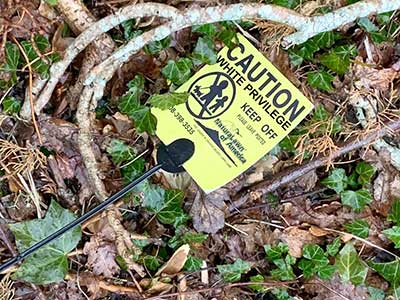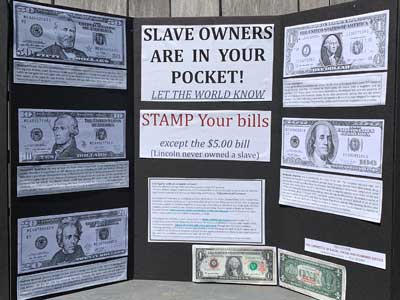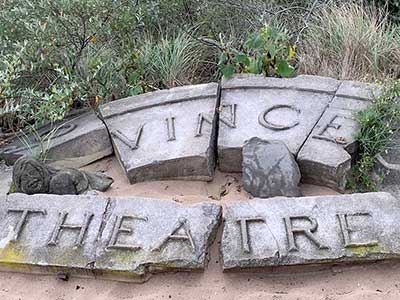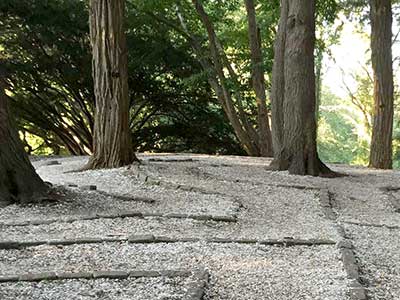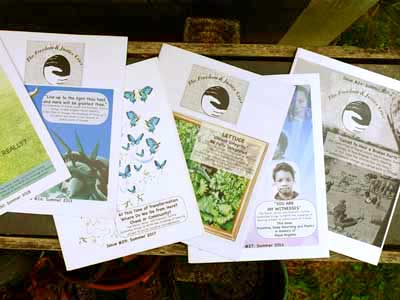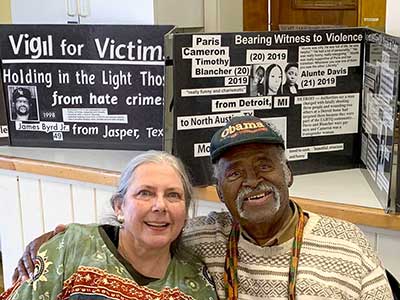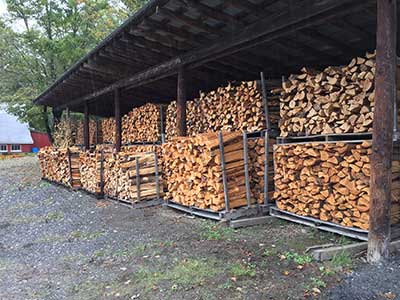by Yonat Shimron | June 2021
The retired pastor’s spoken word is not simply a paean to freedom. It’s a call to all Americans to face the reality of the nation’s history and the unfinished work of Juneteenth. Forbes’ spoken word is not simply a paean to freedom. It’s a call to all Americans to face the reality of the nation’s history and the unfinished work of Juneteenth. “I felt, as a preacher, that this day, in a curious way, has a power not even present in the Fourth of July,” Forbes said. “The Fourth of July set people free from the British Crown. But Juneteenth set people free from the divisions, the dehumanization, the cruelty and bondage of slavery itself.” Recently, he shared his spoken word with another North Carolina religious leader, the Rev. William J. Barber II. Barber liked it so much he had Forbes deliver it on camera. It’s now posted to his Repairers of the Breach YouTube channel.
TAGS: [Collective Action] [2020’s] [Slavery] [History] [Civil War] [Racial Terrorism] [Black Lives Matter] [Role Model] [Politics] [White Supremacy] [Policing] [Social Justice]
Resource Links Tagged with "Role Model"
The Blackfoot Wisdom that Inspired Maslow’s Hierarchy
by Teju Ravilochan | June 2021
Deeply curious about the reason for the stark difference between Blackfoot culture and his own culture, Maslow sought out positive deviants, or unusually successful individuals. He started with the wealthiest members of the Blackfoot tribe. He discovered that “for the Blackfoot, wealth was not measured by money and property but by generosity. The wealthiest man in their eyes is one who has almost nothing because he has given it all away” (Coon, 2006). Maslow witnessed a Blackfoot “Giveaway” ceremony in his first week at Siksika. During the Giveaway, members of the tribe arranged their tipis in a circle and publicly piled up all they had collected over the last year. Those with the most possessions told stories of how they amassed them and then gave every last one away to those in greater need (Blood & Heavy Head, 2007, (video 7 out of 15, minutes 13:00–14:00). By contrast, as shared by Maslow’s biographer Edward Hoffman, Maslow observed different qualities in members of his own culture.
TAGS: [Strategies] [2020’s] [Indigenous] [Social Justice] [Advocacy] [Role Model] [Tips-Dos/Don’ts] [Assumptions] [Economics]
Offensive Mascots Take Toll on Indigenous Athletes; Natalie Weeks-O’Neal Hasn’t Forgotten the Attacks She Faced on the Basketball Court from Fans
by Jaden Urban | July 2021
…But on that day in the 1990s, Williams asked Weeks if she could have a private moment with her. Once they were alone, the coach warned her that the team they were about to play had a racially based mascot, the Indians. Williams knew Weeks’ heritage and culture and wanted to let her know before the game, so she wouldn’t be surprised. “Hey, when we go in there, this is something you might potentially see,” Williams told her. “I just want to talk to you about this, warn you, and get you mentally prepared. There are some things you’re going to have to block out.”
TAGS: [Collective Action] [2020’s] [Indigenous] [Systemic Racism] [Social Justice] [History] [Role Model] [Racial Terrorism] [Politics] [White Supremacy] [White Culture] [White Blindness]
Battle for the Ballot; The Black Sorority That Faced Racism in the Suffrage Movement but Refused to Walk away
by Sydney Trent | August 2020
The air was chilly, the trees still bare, yet the sky was clear and bright. March 3, 1913, was shaping up to be a perfect day for a grand and purposeful parade. Thousands of showily dressed suffragists had amassed in Washington from across the nation — indeed the world — to march along Pennsylvania Avenue on the eve of President Woodrow Wilson’s inauguration.
TAGS: [Assumptions] [2020’s] [Politics] [Role Model] [History] [Systemic Racism] [Employment] [White Supremacy] [White Culture] [White Privilege] [Social Justice]
This Man Not Only Invented the Gas Mask But Rescued 32 Men During An Explosion With It
by Storyteller | JULY 2021
The son of former slaves, Garrett Morgan was born in Paris, Kentucky on March 4, 1877. His early childhood was spent attending school and working on the family farm with his brothers and sisters. While still a teenager, he left Kentucky and moved north to Cincinnati, Ohio in search of opportunity. Although Garrett Morgan’s formal education never took him beyond elementary school, he hired a tutor while living in Cincinnati and continued his studies in English grammar.
… On July 25, 1916, Garrett Morgan made national news for using his gas mask to rescue 32 men trapped during an explosion in an underground tunnel 250 feet beneath Lake Erie. Morgan and a team of volunteers donned the new “gas masks” and went to the rescue. After the rescue, Morgan’s company received requests from fire departments around the country who wished to purchase the new masks. The Morgan gas mask was later refined for use by U.S. Army during World War I. In 1914, Garrett Morgan was awarded a patent for a Safety Hood and Smoke Protector. Two years later, a refined model of his early gas mask won a gold medal at the International Exposition of Sanitation and Safety, and another gold medal from the International Association of Fire Chiefs.
TAGS: [Strategies] [2020’s] [History] [Role Model] [Assumptions]
The Inspirational Story of Horace King: Highly Respected Engineer Horace King is one ofLagrange’s Most Inspirational Historical Figures; Raised as an Enslaved Person, King Died A Free Man and Highly Respected Engineer
by Visit LaGrange Georgia | Date Unknown
Horace King was born in 1807 in South Carolina. Unlike most enslaved persons, he was taught to read and write at a young age. By adulthood, he’d become a competent builder. It’s unclear how he learned the lattice truss design he used for building bridges, but it may have occurred when the lattice truss Pee Dee River Bridge was built near his home. Around 1830, King was purchased by contractor John Godwin. Godwin took King with him to build a bridge over the Chattahoochee River and the pair began working on construction projects throughout the South. In the mid-1830s, Godwin sent King to Oberlin College in Ohio, the first college to admit African Americans. Following his education, King returned to work with Godwin, building courthouses and bridges throughout Georgia and Alabama. In 1841, they rebuilt their Columbus City Bridge which had been destroyed in a flood. Godwin experienced financial difficulty in the late 1830s and transferred ownership of King to his wife and her uncle, possibly to protect King from being taken by creditors. King was permitted to marry a free woman, Frances Gould Thomas, which was a rare allowance within states practicing the enslavement of people.
TAGS: [Assumptions] [History] [Slavery] [Role Model] [Politics] [Civil War] [Systemic Racism] [Black Lives Matter]
The Re-Assassination of Martin Luther King, Jr.
by Wendell Griffen | January 2022
This year, the Arkansas Martin Luther King Jr. Commission, an agency of the Arkansas Department of Education, has invited an un-reconstructed Southern Baptist preacher, right wing politician, and Fox News pundit named Mike Huckabee to deliver a “keynote address” during what it terms an “inter-faith prayer breakfast” on the King holiday (January 17). Attendance will be by invitation only. The event will be held at the Arkansas Governor’s Mansion.
TAGS: [Strategies] [2020’s] [History] [Systemic Racism] [Social Justice] [Role Model] [Politics] [Racial Terrorism] [Civil War] [Black Lives Matter] [White Supremacy] [White Culture] [Economics] [White Privilege] [White Blindness] [Intersectionality]
Jim Crow Laws
by history.com Editors| Updated January 2022
Jim Crow laws were a collection of state and local statutes that legalized racial segregation. Named after a Black minstrel show character, the laws—which existed for about 100 years, from the post-Civil War era until 1968—were meant to marginalize African Americans by denying them the right to vote, hold jobs, get an education or other opportunities. Those who attempted to defy Jim Crow laws often faced arrest, fines, jail sentences, violence and death.
TAGS: [Racial Terrorism] [2020’s] [Systemic Racism] [Silencing POC] [Racial Covenants] [History] [Collective Action] [Denial] [Politics] [White Supremacy] [White Culture] [White Privilege] [Black Lives Matter] [Policing] [Prison System] [Housing] [Justice System] [Advocacy] [Role Model] [Definitions]
Henry Ossawa Tanner: The Life and Work of a 19th-Century Black Artist
by Arnesia Young | February 2021
The 19th century was not an easy time to be a Black person in America, especially if you were trying to make it as an artist. For that reason, it is extremely remarkable to note when an American artist of African descent is able to rise above the racial discrimination so prevalent during that time period and become a renowned artist of international acclaim. Henry Ossawa Tanner was one such artist, and he was able to achieve that impressive feat during his lifetime. While he struggled with the complexities and the implications of his race and heritage, Tanner ultimately persevered and was able to develop his talent in a variety of genres. His artwork and story leave a lasting legacy that has impacted many Black artists who’ve followed since.
TAGS: [Strategies] [2020’s] [Art & Culture] [History] [Role Model] [Slavery] [Black Lives Matter]
‘Shut Down DAPL’: Lakota Youth Bring Black Snake to Biden’s Front Door
by Acee Agoyo | April 2021
Five years since the fight against the Dakota Access Pipeline became a worldwide movement, and four years after tribes and their allies took to the streets in protest, Lakota youth returned to the nation’s capital to once again hold the federal government to its trust and treaty responsibilities. Youth from the Standing Rock Sioux Tribe, the Cheyenne River Sioux Tribe and the Lower Brule Sioux Tribe traveled over 1,500 miles from their communities to make a simple yet pointed request. Shut down the Dakota Access Pipeline, which the federal courts have repeatedly determined was approved under a process that violated the law.
TAGS: [Collective Action] [2020’s] [Indigenous] [POC Climate Action] [Environment] [Politics] [Social Justice] [Justice System] [Systemic Racism] [Advocacy] [Role Model]
A Forgotten Black Founding Father; Why I’ve Made it My Mission to Teach Others about Prince Hall
by Danielle Allen | March 2021
Many of us who live in Massachusetts know the basic outlines of this story and the early role the state played in standing against enslavement. But told in this traditional way, the story leaves out another transformative figure: Prince Hall, a free African American and a contemporary of John Adams. From his formal acquisition of freedom, in 1770, until his death, in 1807, Hall helped forge an activist Black community in Boston while elevating the cause of abolition to new prominence. Hall was the first American to publicly use the language of the Declaration of Independence for a political purpose other than justifying war against Britain. In January 1777, just six months after the promulgation of the Declaration and nearly three years before Adams drafted the state constitution, Hall submitted a petition to the Massachusetts legislature (or General Court, as it is styled) requesting emancipation, invoking the resonant phrases and founding truths of the Declaration itself.
TAGS: [Assumptions] [2020’s] [History] [Role Model] [Black Lives Matter] [Slavery] [Teachers] [Silencing POC] [-ing While Black] [Advocacy] [Systemic Racism] [Social Justice] [Civil War]
Cornel West: The Whiteness of Harvard and Wall Street Is “Jim Crow, New Style”
by George Yancy | March 2021
Cornel West is a preeminent public intellectual, a brilliant philosopher-gadfly and a towering thinker whose critically engaging voice and fearless speech have proven indispensable for calling out injustice wherever it exists. He is a force grounded within a prophetic tradition that refuses idols, even if that idol is democracy itself. He is a bluesman who grapples with the funk of life through a cruciform of love within a crucible of catastrophe, where despair never has the last word. West isn’t a typical professional philosopher. As a professor at Yale in the mid-1980s, he was arrested for attempting, through protest, to get the university to withdraw its investments from all companies that were doing business in Apartheid South Africa. And he relentlessly exposes the limits of disciplinary smugness and the hypocrisy of epistemological “purity.”
TAGS: [Strategies] [2020’s] [Role Model] [Systemic Racism] [White Culture] [Denial] [History] [Definitions] [Anti-Racism] [Social Justice] [Teachers]
American Churches are Apologizing for a Centuries-Old Injustice That Still Reverberates Today; How We Can Start to Undo the Damage
by Melissa J. Gismondi | September 2018
In 2016, the General Assembly of the Presbyterian Church (PCUSA) repudiated the historic “doctrine of discovery.” Although it might sound benign, the doctrine was the pernicious theory that Christians could claim and conquer land inhabited by non-Christians. It helped justify and promote the violent colonization of indigenous lands throughout the Americas. This summer, the Assembly followed up on that repudiation by issuing a report outlining specific actions the church can take to grapple with the doctrine’s legacy. They include official acknowledgments before meetings of the indigenous nations on whose land the meeting is taking place, as well as more discussion of indigenous theologies and educational resources on the doctrine.
TAGS: [Collective Action] [2010’s] [Indigenous] [Faith-Based/Spiritual] [History] [Systemic Racism] [Justice System] [Denial] [White Culture] [White Supremacy] [White Blindness] [Accountability] [Economics] [White Privilege] [Role Model] [Strategies] [Tips-Dos/Don’ts]
The Last Free River of Manitoba
by Stephanie Wood | November 2020
The Seal River is Manitoba’s only major waterway that hasn’t been dammed — and five Indigenous communities have banded together to keep it that way by establishing a protected area. Tadoule Lake is a Sayisi Dene community nestled in the Seal River Watershed, a vast, intact landscape that stretches across northern Manitoba from Hudson Bay almost to the Saskatchewan border. It’s dotted with trees, lakes and wetlands. Sandy hills left behind from glacial rivers, called eskers, snake across the land. The Sayisi Dene and the caribou have lived in relationship with the Seal River Watershed for many generations.
The 50,000-square-kilometre area — about the size of Nova Scotia — has escaped dams, mining and colonial settlement. It’s home to millions of birds, along with polar bears, moose, beluga whales and, of course, its namesake seals. The Seal River is also the only major river in Manitoba that is not dammed.
TAGS: [Assumptions] [2020’s] [Indigenous] [Environment] [History] [POC Climate Action] [Justice System] [Systemic Racism] [Housing] [Advocacy] [Role Model] [Strategies]
Teaching Indigenous Star Stories; Educators like Wilfred Buck Know that Astronomy Did Not, in Fact, Start with Aristotle and End with Neil DeGrasse Tyson
by Kelly Boutsalis | November 2020
When some Cree people look at the sky during summer months, they see Ochekatchakosuk, a group of stars in the shape of a fisher, a weasel-like animal related to the wolverine. According to Cree teaching, a long time ago (likely during the Ice Age), there was no summer in the northern hemisphere. The animals of the region wanted to find summer and bring it back, and the fisher, Ochek, was selected for the task. After he succeeded, he escaped into the sky, and the Creator stamped his shape into the stars. In spring and summer evenings, Ochek is located high in the sky, inviting celebrations of warmer weather; in autumn and winter, he appears closer to the horizon—a reminder to be grateful of the passing seasons.
TAGS: [Strategies] [2020’s] [Indigenous] [History] [Silencing POC] [Advocacy] [Role Model] [White Culture] [White Supremacy] [Denial]
From Most Hated to American Hero: The Whitewashing of Martin Luther King Jr.
by Michael Harriot | April 2018
This week, America will commemorate the 50th anniversary of the assassination of the Rev. Martin Luther King Jr., the most famous and beloved civil rights leader in the nation’s history. Lost in the remembrance of the death of our nation’s most heralded warrior for social justice is the fact that—at the time of his death—King was a man in exile. Contrary to popular belief, when King died, he was not an icon of freedom and equality. In fact, most of the country disliked him. Sadly, on April 4, 1968, a bullet splattered bits of Martin Luther King Jr.’s brains and blood across the balcony of Memphis, Tenn.’s Lorraine Motel. Then, and only then, was white America ready to make him a hero.
TAGS: [Strategies] [2010’s] [Myths] [History] [White Culture] [White Defensiveness] [Collective Action] [Role Model] [Social Justice] [Assumptions] [White Blindness] [Silencing POC] [Systemic Racism]
Black Professor at Loyola University Maryland Creates a Place for Positive Conversations about Race
by John-John Williams IV | December 2020
A series of deadly events culminated with Karsonya “Kaye” Wise Whitehead helping create a place at Loyola University Maryland where she wants positive conversations about race to exist and flourish. … Whitehead wants to bring students, teachers, community members and academics into the institute to train, discuss and devise solutions to combat racism. That means offering a curriculum and diversity equity and inclusion training for K-12 teachers through the institute’s Center for Teaching and Learning, which will be offered starting summer 2022. Junior fellowships will be offered to college students around the country so they can participate in discussions and research focused on race through the institute’s Center for Research and Culture as soon as this spring.
TAGS: [Strategies] [2020’s] [Advocacy] [Systemic Racism] [Teachers] [Policing] [Police Shootings] [Role Model] [Black Lives Matter] [-ing While Black] [Anti-Racism] [History] [Individual Change] [Tips-Dos/Don’ts]
Episcopal Church Established by Baltimore Slave Owners Creates $500,000 Reparations Fund
by Jonathan M. Pitts | January 2021
A Baltimore Episcopal church founded by slaveholders in the 1860s says it will spend $500,000 over the next five years to establish a fund intended as reparations for slavery.
Members of Memorial Episcopal Church in Bolton Hill voted Sunday to set aside $100,000 to donate in the next year to community organizations doing “justice-centered work.” The fund aims to address race-based inequalities that took root during slavery and proliferated for generations in the church and in the community at large.
TAGS: [Strategies] [2020’s] [Faith-Based/Spiritual] [Reparations] [Social Justice] [Systemic Racism] [Role Model] [Housing] [Environment] [Politics] [Racial Covenants] [History] [Civil War] [Collective Action] [Confederate Monuments] [Advocacy]
A Conversation about Truth and Reconciliation in the US
by Ezra Klein | July 2020
What would it take for America to heal? To be the country it claims to be? This is the question that animates Bryan Stevenson’s career. Stevenson is the founder and executive director of the Equal Justice Initiative, a clinical professor at the New York University School of Law, a MacArthur “genius,” and the author of the remarkable book Just Mercy — which was recently turned into a feature film where Stevenson was played by Michael B. Jordan.
TAGS: [Strategies] [2020’s] [Confederate Monuments] [Role Model] [Advocacy] [Prison System] [History] [Denial] [White Blindness] [Slavery] [Civil War] [Economics] [White Supremacy] [Systemic Racism]
A Medical Student Couldn’t Find How Symptoms Look on Darker Skin. He Decided to Publish a Book about it.
by Sydney Page | July 2020
*Paywall Alert
Malone Mukwende, a 20-year-old medical student, found himself repeatedly asking the same question: “But what will it look like on darker skin?”
He’s publishing a book to answer that question.
Since his first class at St George’s, University of London, “I noticed a lack of teaching about darker skin tones, and how certain symptoms appear differently in those who aren’t white,” said Mukwende, who recently completed his second year of study in the medical program. Whether a rash, a bruise, blue lips or other common physical reactions, “it was clear to me that certain symptoms would not present the same on my own skin,” said Mukwende, who was born in Zimbabwe and now lives in London. “I knew that this would be a problem for patients of a similar skin tone to mine, or of a darker skin tone in general.” Not only was there an absence of imagery to highlight the difference, but students were not instructed on the correct terminology to describe conditions that appear on darker skin, Mukwende said.
TAGS: [Strategies] [2020’s] [Role Model] [Advocacy] [Colorblindness] [Denial] [White Supremacy] [White Culture] [White Privilege]
Haudenosaunee women inspired women’s suffrage movement (Commentary)
by Betty Lyons, Onondaga Nation | August 2020
It was no accident that Central New York was the birth of the American movement for women’s suffrage, but recent commemorations of the 100th anniversary of the formal U.S. adoption of women’s suffrage continues attempts to erase the role that Haudenosaunee (Iroquois) women played in inspiring the first convention in Seneca Falls.
TAGS: [Assumptions] [2020’s] [Indigenous] [History] [Myths] [Role Model]
Do’s and Don’ts for Bystander Intervention
by American Friends Service Committee Staff | Date Unknown
If you witness public instances of racist, anti-Black, anti-Muslim, anti-Trans, or any other form of oppressive interpersonal violence and harassment, use these tips on how to intervene while considering the safety of everyone involved. Available to download as a PDF.
TAGS: [Collective Action] [2010’s] [Bystander Intervention] [Tips-Dos/Don’ts] [Role Model] [Individual Change] [Strategies] [Advocacy] [Quaker] [Faith-Based/Spiritual]
The Heart of Whiteness: Ijeoma Oluo Interviews Rachel Dolezal, the White Woman Who Identifies as Black
by Ijeoma Oluo | April 2017
And with that, the anger that I had toward her began to melt away. Dolezal is simply a white woman who cannot help but center herself in all that she does—including her fight for racial justice. And if racial justice doesn’t center her, she will redefine race itself in order to make that happen. It is a bit extreme, but it is in no way new for white people to take what they want from other cultures in the name of love and respect, while distorting or discarding the remainder of that culture for their comfort. What else is National Geographic but a long history of this practice. Maybe now that I’ve seen the unoriginality of it all, even with my sister’s name that she has claimed as her own, she will haunt me no more and simply blend into the rest of white supremacy that I battle every day.
TAGS: [Individual Change] [2010’s] [Anti-Racism] [Slavery] [Role Model] [White Privilege] [White Supremacy] [White Culture] [White Fragility/Tears] [Implicit Racism]
Colin Kaepernick Was Right About Us
by John Pavlovitz | September 2018
* He exposed us when we felt it was our right to tell another human being how to express their personal freedoms, during an anthem supposedly devoted to celebrating those personal freedoms. He exposed us when we treasured flags and songs over flesh and blood; when we repeatedly ignored dissenting facts in order to hold on to our easy and lazy outrage.
TAGS: [Collective Action] [Accountability] [Role Model] [2010’s]
Meet the Young Activists of Color Who Are Leading the Charge Against Climate Disaster
by Nylah Burton | October 2019
These US-based activists know firsthand the impact racism, poverty, and colonialism have had on the planet. Not listening to “youth activists of color” we are only viewing it through “white eyes” and “we miss so much.” Vox speaks to a few of these teens to give us “a glimpse into some of the youth of color who are leading the climate movement in their communities – and who are motivated by the fierce need to protect the most vulnerable.”
TAGS: [Strategies] [2010’s] [POC Climate Action] [Role Model] [Advocacy] [Accountability] [Silencing POC]
For Lasting Climate Change Solutions, It’s Time to Listen to Young People of Color | Opinion
by Nyiesha Mallet and Asli Mwaafrika | September 2019
With much attention turning this week to the upcoming U.N. Climate Action Summit and Greta Thunberg’s involvement as a youth leader, the time is long overdue to listen to young voices from these disproportionately impacted communities of color. The time has come for us to be recognized as leaders in climate advocacy and solutions.
TAGS: [Strategies] [2010’s] [POC Climate Action] [Role Model] [Collective Action]
“Got… Really?” beads
“Got… Really?” beads are a cheap and easy action. Choose what “Got _ _ _ _?” phrases you want to use such as “Got bias? Then on the back print “Really?”
TAGS: [Collective Action] [Accountability] [Role Model] [White Privilege]
The Story of Phillis Wheatley
by Elizabeth Warren | December 2019
Born in West Africa, Phillis Wheatley was kidnapped by slave traders and brought to New England in 1761. She mastered English, Latin, Greek and English literature at a time when enslaved people could be condemned to death for learning. By imagining she could, she became the first black woman poet to publish a book before the Revolutionary War. Using her example, we too can see a future where collectively our imaginations can be challenged to change the world for the better.
TAGS: [2010’s] [Strategies] [History] [Role Model]
Meet the New Generation of Black Climate Leaders
by Nexus Media | February 2019
Twenty-two experts and advocates talk about the struggle for racial justice in the face of rising temperatures. “Organizers and activists long relegated to the sidelines are gaining momentem – and political power – as they push for bold solutions to the greatest challenge of our time.”
TAGS: [2010’s] [Role Model] [Economics] [History] [Art & Culture] [Advocacy]
[Social Justice] [Environment] [Strategies]
19 Youth Climate Activists of Color Who Are Fighting to Protect the Earth
by Sherronda J. Brown | September 2019
Meet the black and brown teens fighting to protect their lands from industrial, military, and colonialist actions that have caused climate change. This list is not extensive and far from complete—there are many more BIPOC youths leading the fight against climate change and demanding that world leaders step-up and confront how colonialism continues to destroy the earth and Wear Your Voice highlights some of these teens.
TAGS: [Role Model] [2010’s] [POC Climate Action] [Advocacy] [Collective Action] [Environment]
[Strategies]
